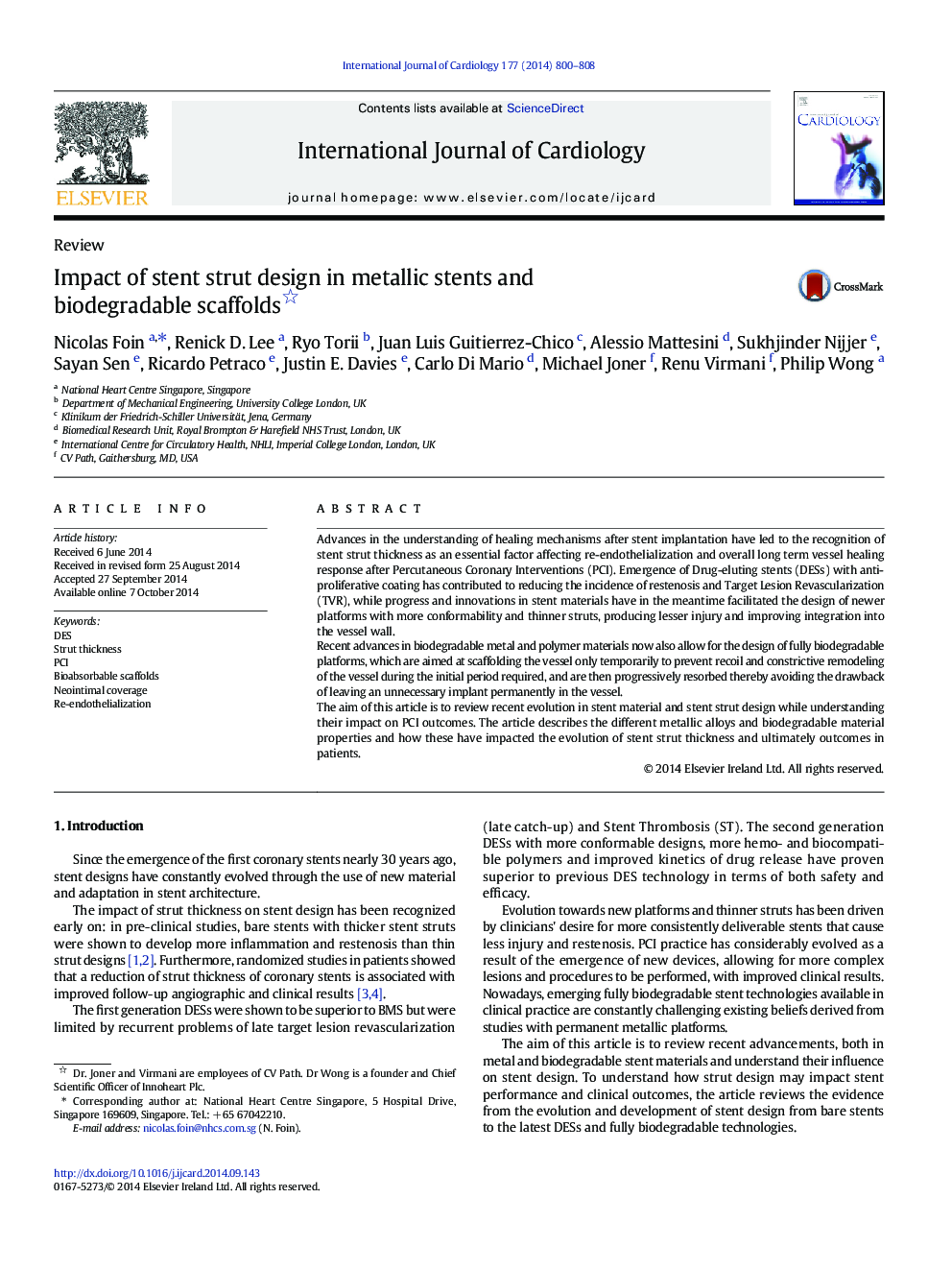| Article ID | Journal | Published Year | Pages | File Type |
|---|---|---|---|---|
| 5969510 | International Journal of Cardiology | 2014 | 9 Pages |
â¢We review the evidences of the impact of strut thickness specifically in Bare and Drug Eluting Stent.â¢We provide a comprehensive review of the impact of stent strut design in terms of stent performance and clinical results.â¢We describe the characteristics of materials used in bioresorbable technology and the implication for scaffold design and strut thickness.
Advances in the understanding of healing mechanisms after stent implantation have led to the recognition of stent strut thickness as an essential factor affecting re-endothelialization and overall long term vessel healing response after Percutaneous Coronary Interventions (PCI). Emergence of Drug-eluting stents (DESs) with anti-proliferative coating has contributed to reducing the incidence of restenosis and Target Lesion Revascularization (TVR), while progress and innovations in stent materials have in the meantime facilitated the design of newer platforms with more conformability and thinner struts, producing lesser injury and improving integration into the vessel wall.Recent advances in biodegradable metal and polymer materials now also allow for the design of fully biodegradable platforms, which are aimed at scaffolding the vessel only temporarily to prevent recoil and constrictive remodeling of the vessel during the initial period required, and are then progressively resorbed thereby avoiding the drawback of leaving an unnecessary implant permanently in the vessel.The aim of this article is to review recent evolution in stent material and stent strut design while understanding their impact on PCI outcomes. The article describes the different metallic alloys and biodegradable material properties and how these have impacted the evolution of stent strut thickness and ultimately outcomes in patients.
